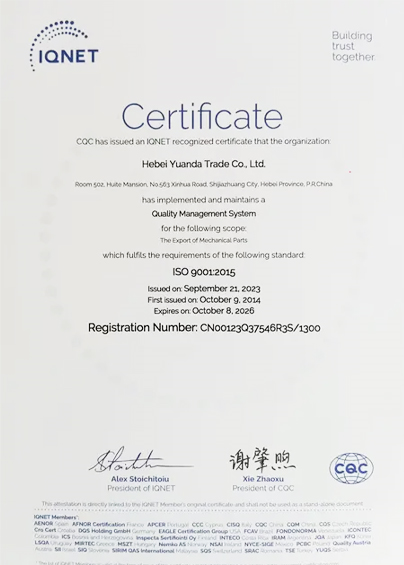Mobile:+86-311-808-126-83
Email:info@ydcastings.com
420a exhaust manifold
The 420A exhaust manifold is a vital component in the exhaust system of certain vehicles, notably those equipped with the Chrysler 420A engine, commonly found in models like the Mitsubishi Eclipse, Eagle Talon, and others from the mid-1990s through the early 2000s. Understanding its design, function, and potential upgrades is essential for automotive enthusiasts and mechanics alike.
.
One of the challenges associated with the 420A exhaust manifold is its tendency to crack over time, particularly on older models. This can lead to exhaust leaks, which may cause a decrease in engine performance, increased emissions, and unwanted noise. Regular inspection of the manifold for cracks and leaks is advisable, especially for those who drive their vehicles under demanding conditions.
420a exhaust manifold

For performance enthusiasts, upgrading the 420A exhaust manifold can yield significant benefits. Aftermarket options, such as tubular manifolds, are available that offer increased airflow and improved exhaust scavenging. This can lead to enhanced horsepower and torque, making the vehicle more responsive and efficient. In addition, these upgraded manifolds are often constructed from lighter materials, reducing overall weight and improving handling.
Another key aspect to consider is the integration of the exhaust manifold with the turbocharger system in some modified setups. A well-designed manifold can optimize turbo spool time and overall boost response, contributing to a more engaging driving experience.
In conclusion, the 420A exhaust manifold plays a critical role in engine performance and efficiency. Whether maintaining the stock system or contemplating upgrades, understanding its purpose and potential issues is essential for any automotive enthusiast. By being proactive about maintenance and considering performance enhancements, drivers can ensure that their vehicles operate at their best, providing enjoyment and reliability for years to come.
-
Valve Body Acts as the “Heart” of Flow ControlNewsMay.19,2025
-
Understanding the Importance of ImpellersNewsMay.19,2025
-
Importance of Automobile Water PumpsNewsMay.19,2025
-
How an Engine Oil Pan Works to Keep Your Car LubricatedNewsMay.19,2025
-
Common Materials Used in Pump Impeller ManufacturingNewsMay.19,2025
-
Ball Valve Casting in Modern Pipeline SystemsNewsMay.19,2025











